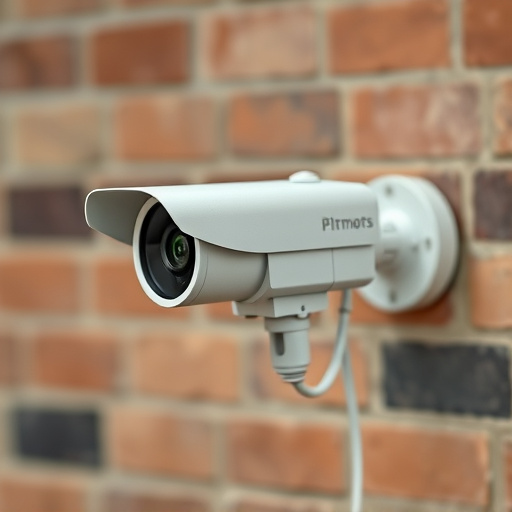Indoor dummy security cameras enhance safety and aesthetics with flexible mounting in high-traffic areas like entryways, corridors, and lobbies. Power options include standard outlets for reliable hardwiring, wireless charging for discreet installations, and battery packs for temporary setups. Strategically placing these cameras ensures optimal visibility, covering critical zones within indoor environments. Regular cleaning of connections is vital for all power types to maintain their effectiveness.
In today’s security-conscious world, indoor dummy security cameras offer a discreet yet effective way to monitor spaces. This guide explores the diverse power options available for these versatile devices, from standard electrical connections to innovative battery-powered solutions. We’ll delve into optimal indoor mounting locations, considering factors like accessibility and aesthetic integration. Understanding these aspects ensures consistent performance and longevity of your dummy camera system, catering specifically to indoor dummy camera mounting locations.
- Understanding Dummy Security Cameras and Their Power Requirements
- Evaluating Indoor Spaces for Camera Mounting: Potential Locations
- Electricity Sources for Indoor Dummy Camera Installation
- Battery-Powered Solutions: A Flexible Alternative
- Maintenance and Longevity: Tips for Consistent Power Supply
Understanding Dummy Security Cameras and Their Power Requirements
Dummy security cameras, often used as deterrents or for decorative purposes, mimic the look and function of real surveillance equipment. They are designed to blend seamlessly into various indoor locations, providing a sense of enhanced security without the need for actual monitoring. These cameras come in diverse forms, from realistic models resembling popular brands to more abstract designs, all sharing a common goal: to deter potential intruders while adding aesthetic appeal.
When it comes to powering these devices, dummy cameras typically have flexible options. Many are battery-operated, making them easy to install and place anywhere indoors, including strategic locations such as entryways, windows, or doors. Rechargeable models offer convenience and environmental friendliness, eliminating the constant need for battery replacements. Understanding the power requirements of these cameras is essential, especially when selecting indoor dummy camera mounting locations, ensuring they remain operational and effective in creating a sense of security.
Evaluating Indoor Spaces for Camera Mounting: Potential Locations
When evaluating indoor spaces for dummy camera mounting, consider areas with high foot traffic and visible locations. Entryways, corridors, and common areas like break rooms or lobbies are prime spots. These areas offer optimal visibility, ensuring potential intruders can be deterred effectively. Additionally, ceilings, walls, or strategic furniture placements can serve as discreet yet effective camera positioning.
Indoor dummy camera mounting locations should also factor in lighting conditions. Well-lit spaces provide clearer footage, making it easier to identify and monitor activities. Natural light from windows or consistent artificial lighting solutions can significantly enhance the quality of surveillance video. By strategically placing cameras in these areas, you create a robust security network that covers key zones within any indoor environment.
Electricity Sources for Indoor Dummy Camera Installation
When considering indoor dummy camera mounting locations, electricity sources are a key component to ensure smooth operation. The most common and reliable option is connecting the camera to your home’s electrical grid via a standard power outlet. This straightforward approach offers convenience and removes the need for complex wiring. However, for more discreet installations, some models offer wireless charging options, eliminating the need for visible cables altogether.
Indoor dummy cameras can also be powered by battery packs, which are particularly useful in areas without easy access to outlets or for temporary setups. While this may require periodic replacement or recharging, it provides flexibility in terms of placement and is ideal for situations where a permanent power connection isn’t feasible.
Battery-Powered Solutions: A Flexible Alternative
Battery-powered solutions offer a flexible alternative for indoor dummy camera mounting locations, eliminating the need for complex wiring and permanent installations. These cameras are equipped with rechargeable batteries that can last for extended periods, making them ideal for areas where access is limited or where it’s challenging to run power cables. Their wireless design allows for easy placement, ensuring strategic coverage without the hassle of dealing with power outlets.
This option is particularly beneficial for temporary setups, such as in event security or during construction sites, providing a cost-effective and efficient solution. With advanced battery technologies, these cameras can operate seamlessly for weeks, if not months, between charges, ensuring continuous monitoring without interruption.
Maintenance and Longevity: Tips for Consistent Power Supply
Maintaining a consistent power supply is key to ensuring your indoor dummy security cameras have a long and effective lifespan. When choosing a power option, consider the camera’s mounting location. For cameras placed in accessible areas like hallways or living rooms, hardwiring directly into the electrical system offers reliable, continuous power. This method eliminates the need for frequent battery replacements, making it ideal for locations where quick and easy maintenance is crucial.
In less accessible spots, such as high-ceilings or narrow spaces, wireless charging solutions become more practical. These options eliminate the hassle of climbing up ladders to replace batteries and ensure your cameras remain operational even in challenging environments. Regular cleaning of the camera’s contact points and ensuring a secure connection are simple yet vital steps for maintaining optimal performance, regardless of power supply type.
When selecting a power source for an indoor dummy security camera, consider your specific mounting locations (Indoor Dummy Camera Mounting Locations) and desired flexibility. Whether relying on standard electricity or opting for battery-powered solutions, ensuring a consistent power supply is key to maintaining optimal camera performance and longevity. By evaluating your space and choosing the right power option, you can enhance your home or business security with a reliable and efficient dummy camera system.
